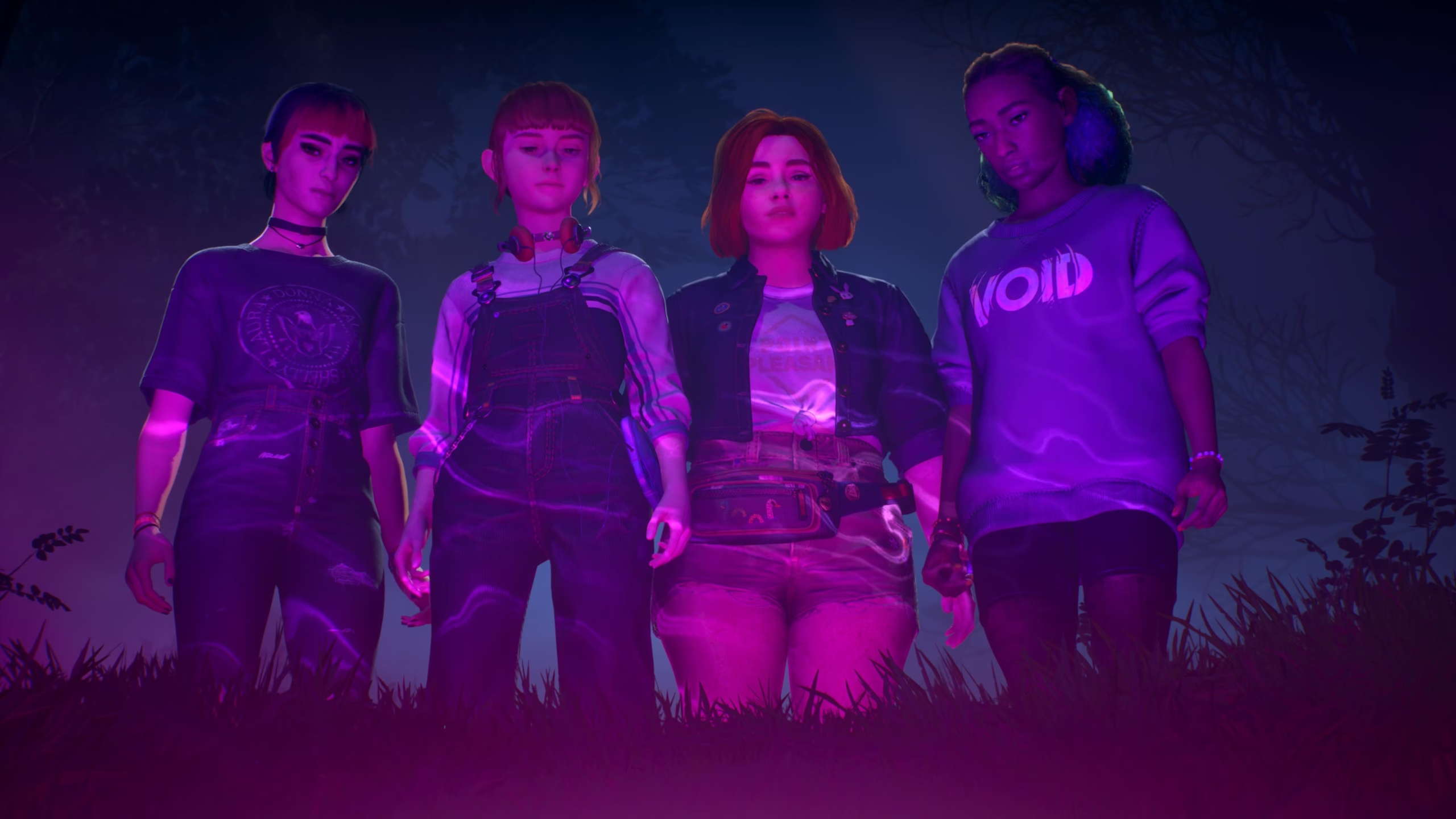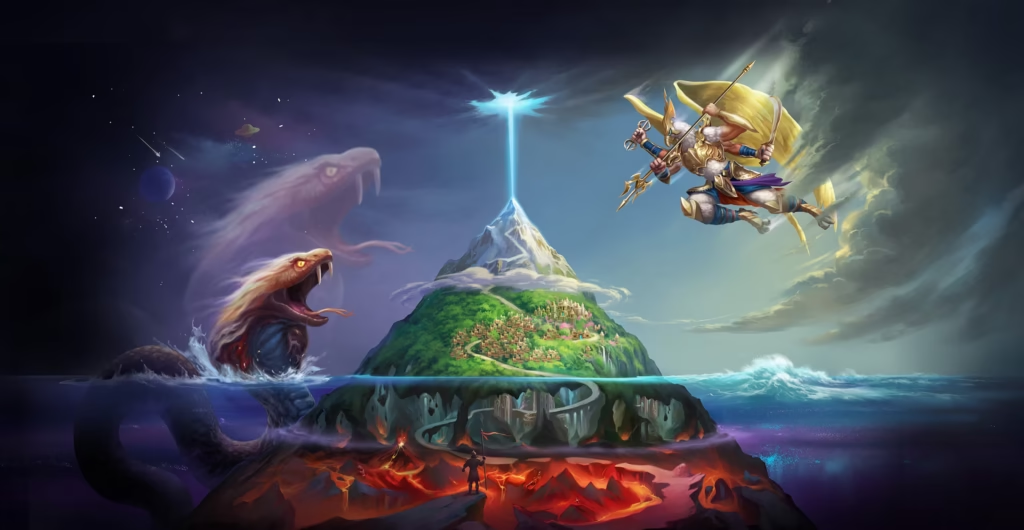Yeah, it’s not very good.
There’s no dancing around that fact, so let’s avoid delaying the inevitable with a history of developer Don’t Nod’s past hits and misses, reminiscences of great narrative adventure titles or a commentary on the need to tell a variety of different stories. Instead, I’d like to focus on how a great premise was treated quite shabbily by weak characters, uninspiring dialogue, a pedestrian story, poor pacing and very little to actually do.
The premise then — and the likely reason my expectations were so high — seemed to be one of a Now and Then meets Stand by Me (two very different coming-of-age dramas) with a sprinkling of supernatural goings-on. I was sold on the concept because given Don’t Nod’s pedigree with the Life is Strange series, I expected beautifully fleshed-out characters, a measured and well-paced story, moments of levity seamlessly interspersed with melancholic ones, meaningful choices and interactions, and so on. The best games from the studio never relied on outstanding graphics, and so the fact that the trailers made Lost Records: Bloom & Rage appear visually fantastic didn’t really do all that much for me. But, I was quite excited in anticipation. And even more so once the review code arrived.
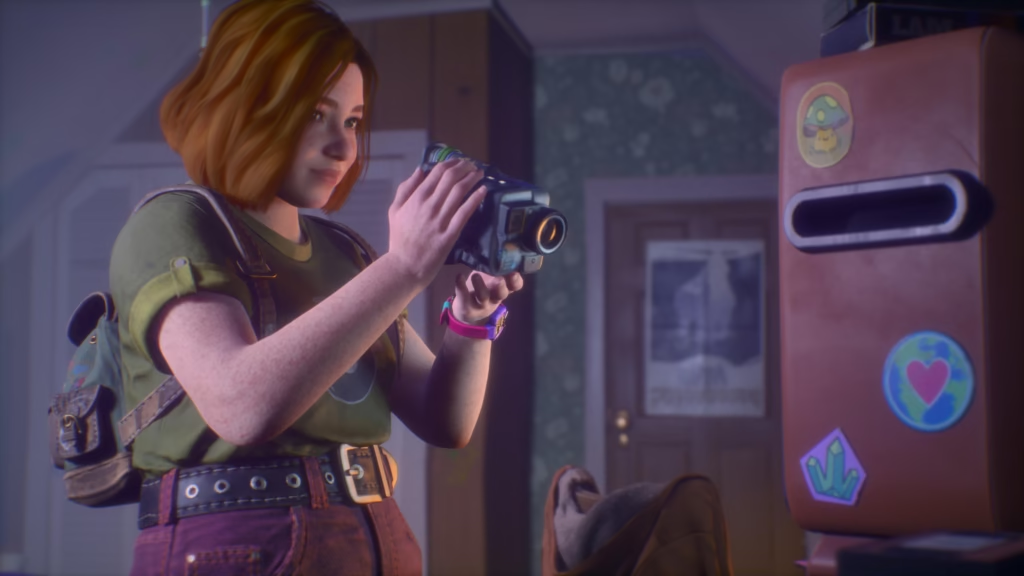
American Graffiti
It’s 1995, and you play Swann Holloway, a meek, awkward, insecure and self-conscious teen from the fictional Michigan town of Velvet Cove. She seems to have a tough time making friends (instead seeking companionship with her cat and her terrarium), and often says things like “Geez-o”. I’m not sure if that was part of 1995 lingo, but I was happy to go along with it, particularly since it didn’t irritate me as much as ‘rizz’, ‘delulu’, ‘simp’ and the rest of the demented modern lexicon do.
But back to Swann, and she’s a budding videographer who records footage of pretty much anything and everything. And with its viewfinder mini-game, Lost Records: Bloom & Rage invites you to share in that pleasure with her. It is when she’s recording footage of ants swarming an ice cream cone outside a video library (remember those?) one day that she encounters Nora, Autumn, and Kat — a trio that over the course of the next few days becomes her support system, her crew, her coven and her punk band.
Very early on, the game reveals that its events occur over two time periods, 1995 and 2022, and it switches between them. The central conceit of this narrative is that something unspeakable happened 27 years ago, and these long-lost friends are meeting for the first time since to go over the wreckage (psychological and otherwise) of the past. It bears stating at this point that the developers’ depiction of 1995 and Small Town America is quite engaging, with great attention to detail and tonnes of blink-and-you’ll-miss-them references.
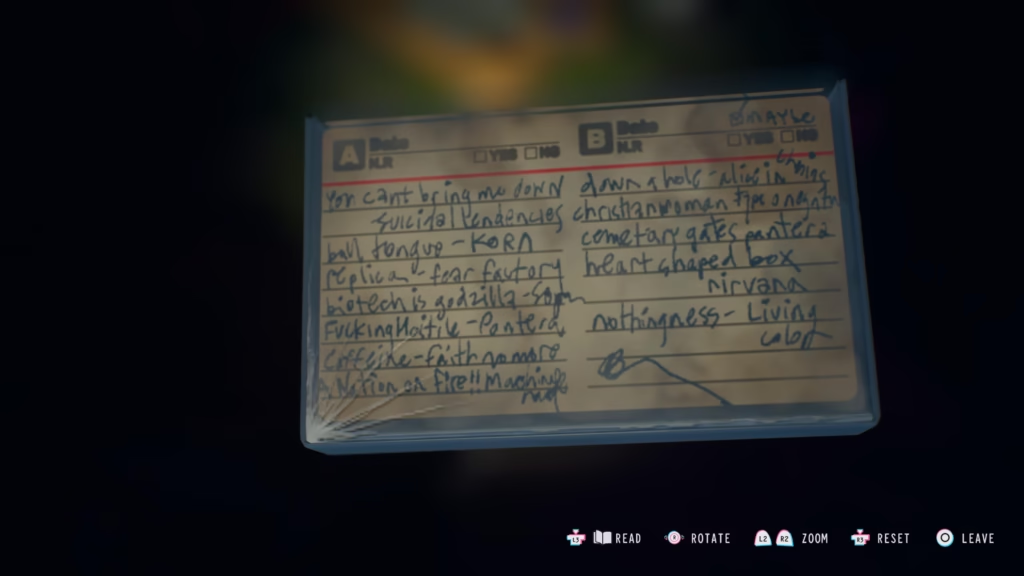
At first, the interplay between the past and present, how a choice back then would reflect seconds later in the conversation taking place right now, and the way characters in 2022 would react to how they acted back in 1995, were quite fascinating. I enjoyed the fact that I was never too far from seeing some tiny impact or repercussion of my actions. All throughout, I was aware that this was the first part of the game (Tape 2 releases in April) and so things would likely happen at a languorous pace. And for a while, this was the case, with time being lavished on the friendship of the four girls before quickly smash-cutting back to the present and an “Aww shucks, I can’t believe we did that”-type scene.
In terms of depicting the easy back-and-forth between the girls, their bonding, their disagreements and such-like, the game does an impressive job of laying the foundation. A foundation that I believed would be used to prop up a gripping story. But alas. It was around four hours in (roughly halfway through my playthrough) that I realised that things weren’t really going anywhere. There seemed to be a preoccupation with focussing on minutiae and losing sight of the bigger picture in the 1995 sections. Meanwhile in 2022, the characters were dawdling — the conversations that seemed circumspect at first quickly degenerated into lethargy, and I was disappointed at the absence of a skip button. But my woes were only just beginning.
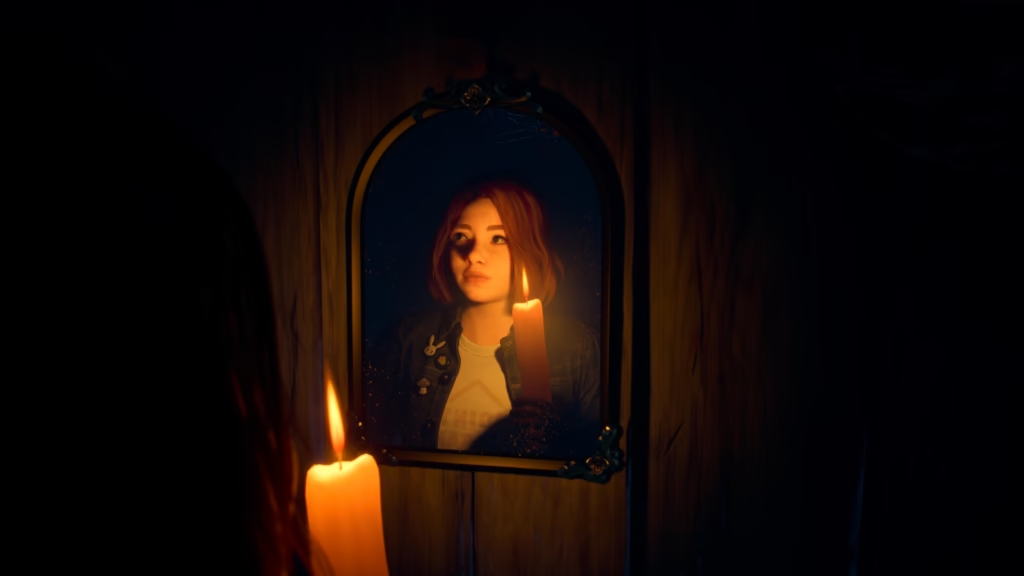
Cassette tape jammed
Plenty of narrative adventure games are slow-burners and take their own sweet time getting you from A to B. The best of those make the journey as intriguing as the destination. With Lost Records: Bloom & Rage, what we get is a journey that never really seems to get out of the blocks until a late (and arguably unearned) surge at the end to hurry us over to the destination and set up the second part. There’s no other way to describe the painfully slow and bland manner in which the conversation progresses in 2022, and the way things suddenly ramp up in 1995.
Without going into too many details, we enter Swann’s life at a time when her family is in the process of winding up life in Velvet Cove and relocating to Vancouver. It takes around four weeks or so for her to become best friends with Autumn, Nora and Kat, and then something happens. Now, that something (we still don’t know for sure) saw to it that the quartet never spoke to each other again for 27 years. To reiterate: We have best friends, a life-changing event, over a quarter of a century of silence, and a compelling reason to meet again. And yet, the reunion is such a muted and flaccid, for want of a better word, affair.
Further, while I found the key characters interesting at the start, by the time I had clocked eight hours in Velvet Cove, I was glad to be done with them. And herein lies another case of ‘great premise, poor execution’. On paper, Swann, Autumn, Kat and Nora make for fascinating characters as individuals and as four parts of a composite. The first scene in which Swann encounters the other three hints at aspects of their respective personalities that I was looking forward to exploring. Unfortunately, the writing turns them into cliché-spouting, cringe-inducing and mawkish caricatures instead of the sort of living, breathing and relatable characters for which Don’t Nod is known. Particularly uninspiring is the treatment of Swann, who is only portrayed as simpering, cloying and awkward throughout, without very much character depth or growth.

On the gameplay side, things are split into three clear parts: Dialogue-selection, point-and-click and video-recording. The first part is self-explanatory, but I would’ve preferred to see how my choices affect relationships, since nearly every dialogue choice is accompanied by an icon: A heart, a breaking heart or a little plant. At no point over the course of the game did I ever find out what all of that was in service of (perhaps the second part of the game will make this clearer). The point-and-click elements are as basic as they get, in that you can literally aim the cursor at something and click on it to examine it, and then put it back down. In the rare cases, you can pick up objects and use them somewhere else, but that’s about as complex as it gets. There’s no combining objects, solving puzzles, using objects as talking points with NPCs or anything of the sort.
And finally, there’s the camcorder, which is responsible for most of the heavy lifting in terms of Lost Record: Bloom & Rage‘s gameplay. That collectibles in this game are made of video clips you record was a nice touch. I enjoyed seeking out birds, critters, graffiti, scenic locales and the rest, and then reviewing the clips that would go into the mini movie. The mini editor that lets you select clips and reorder them was also a fine touch. Where all of this gets a bit weird is that one of the categories for mini movies is a showcase of your friends. This takes the game to some dubious voyeuristic territory, where you are shooting footage of your friends even as one (or maybe two) of them is requesting you to stop. The alternative is to videograph them when they’re not looking — which is also a problematic concept.
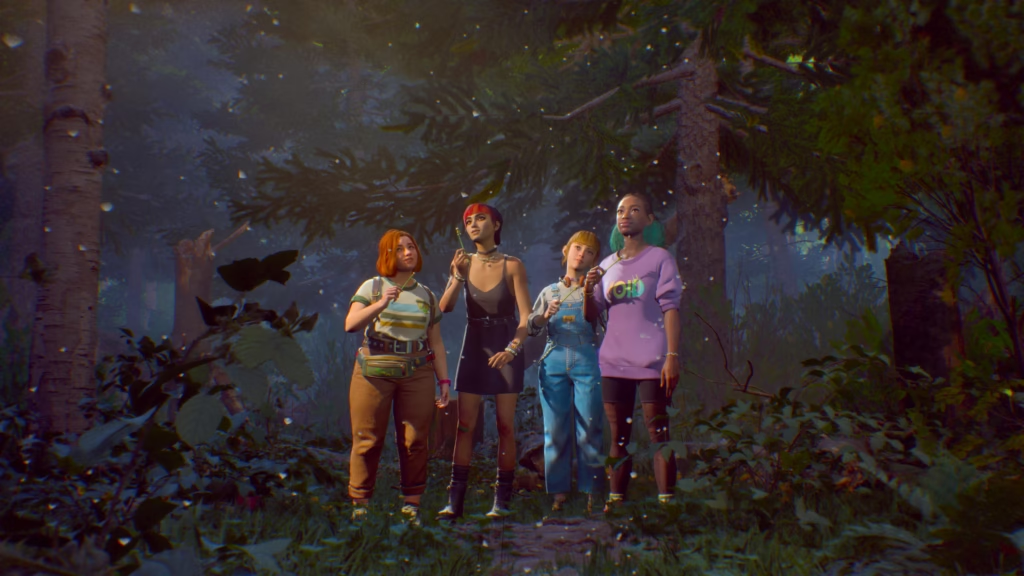
Overall though, I felt like the novelty of the camcorder wore thin in the absence of any other significant gameplay mechanic. I did wonder at times if what I was playing was truly a narrative adventure or a basic walking simulator, or even a visual novel. As for the positives, the game is extremely easy on the eye (even if it does suffer from the odd hiccup with pop-in textures) and I wasn’t troubled by glitches, bugs or crashes. The voice-acting is of a high quality (even if the content is middling at best) and the sound design is immersive. Unfortunately, the in-game music (which isn’t what was depicted on the picture of the cassette above) will occupy a prime spot in a dictionary under the entry for ‘generic’. It truly is that indistinct. This is a massive miss for a game that goes to great pains to point out how one of the biggest interests of its main characters is music and making it.
The two-tape solution
Accustomed as I am to narrative adventures split into bite-size episodes that release within weeks of one another, this formula isn’t a one-size-fits-all. For instance, while I saw the merit in Telltale Games doing it with their action-packed episodes that always ended on a cliffhanger, there would’ve been less sense in a Firewatch, for instance, following that route. Similarly, while Don’t Nod went the periodical episodes route with the first two Life is Strange games, Deck Nine — that took over the series — eschewed the gap and gave players all the episodes of Life Is Strange: True Colors at one go. It’s simply a case of gauging what you have on your hands and knowing how to go about making the biggest impact.
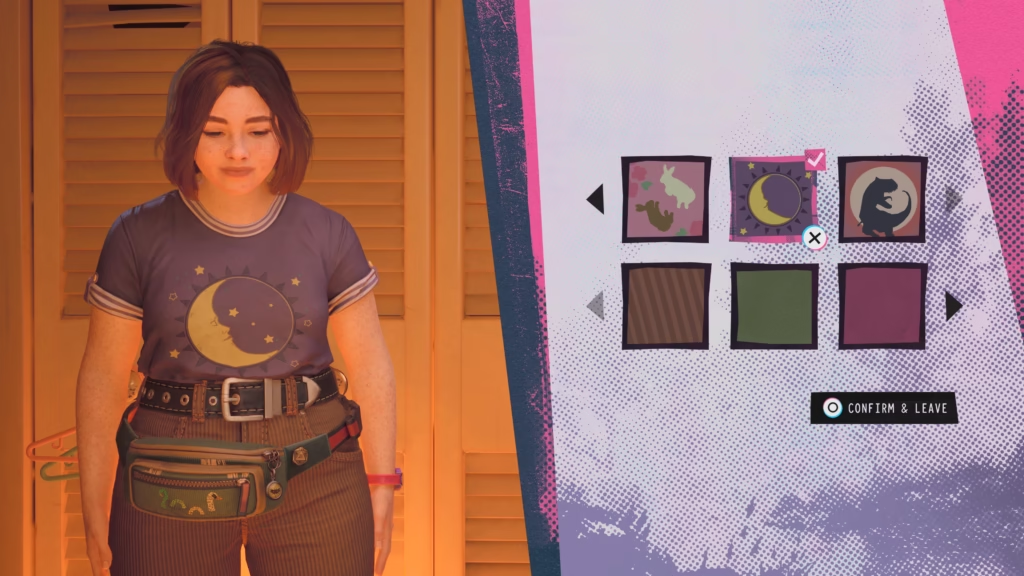
That brief seems to have been missed over at Don’t Nod this time around because all the points made in the paragraphs above don’t exactly point to a riveting first part that will make players champ at the bit over the two-month wait ahead of the concluding episode. If anything, Tape 2 should have been released alongside the first part to mitigate the ennui caused by the latter. I realise players don’t have to pay extra for the second part, but time is equally precious. And I worry about whether people will even want to invest another eight to 10 hours of their lives digging through Velvet Cove for an iota of excitement or entertainment. It’s rather fortunate then that the game is part of a Day One drop on the top tiers of PS Plus, which means more people are likely to check it out.
All that said, I do hope to be proven utterly wrong by Tape 2, and for all of my gripes with Tape 1 to suddenly make sense within the context of the complete picture. I hope also that certain tropes and character quirks grow on me before the second part releases, thereby making my experience less prejudiced. And most of all, I hope that the team over at Don’t Nod has been saving all the good stuff for Tape 2 and that an avalanche of cool stuff is unveiled when that episode drops. While all this is highly speculative, what is for certain is that there’s only a brief two-month wait until we all find out.
Game reviewed on PlayStation 5. Review code provided by publisher
